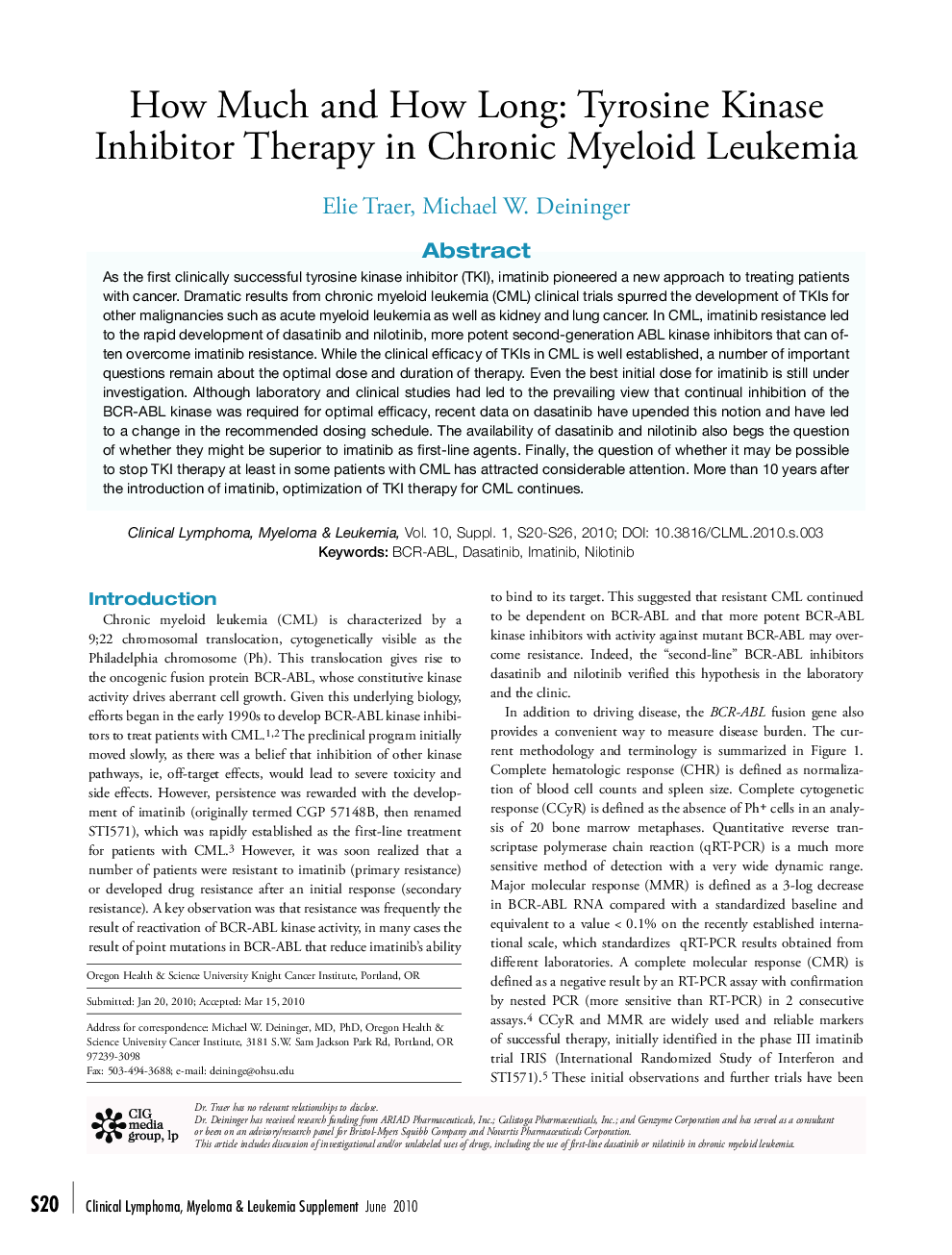| Article ID | Journal | Published Year | Pages | File Type |
|---|---|---|---|---|
| 2755541 | Clinical Lymphoma Myeloma and Leukemia | 2010 | 7 Pages |
As the first clinically successful tyrosine kinase inhibitor (TKI), imatinib pioneered a new approach to treating patients with cancer. Dramatic results from chronic myeloid leukemia (CML) clinical trials spurred the development of TKIs for other malignancies such as acute myeloid leukemia as well as kidney and lung cancer. In CML, imatinib resistance led to the rapid development of dasatinib and nilotinib, more potent second-generation ABL kinase inhibitors that can often overcome imatinib resistance. While the clinical efficacy of TKIs in CML is well established, a number of important questions remain about the optimal dose and duration of therapy. Even the best initial dose for imatinib is still under investigation. Although laboratory and clinical studies had led to the prevailing view that continual inhibition of the BCR-ABL kinase was required for optimal efficacy, recent data on dasatinib have upended this notion and have led to a change in the recommended dosing schedule. The availability of dasatinib and nilotinib also begs the question of whether they might be superior to imatinib as first-line agents. Finally, the question of whether it may be possible to stop TKI therapy at least in some patients with CML has attracted considerable attention. More than 10 years after the introduction of imatinib, optimization of TKI therapy for CML continues.
